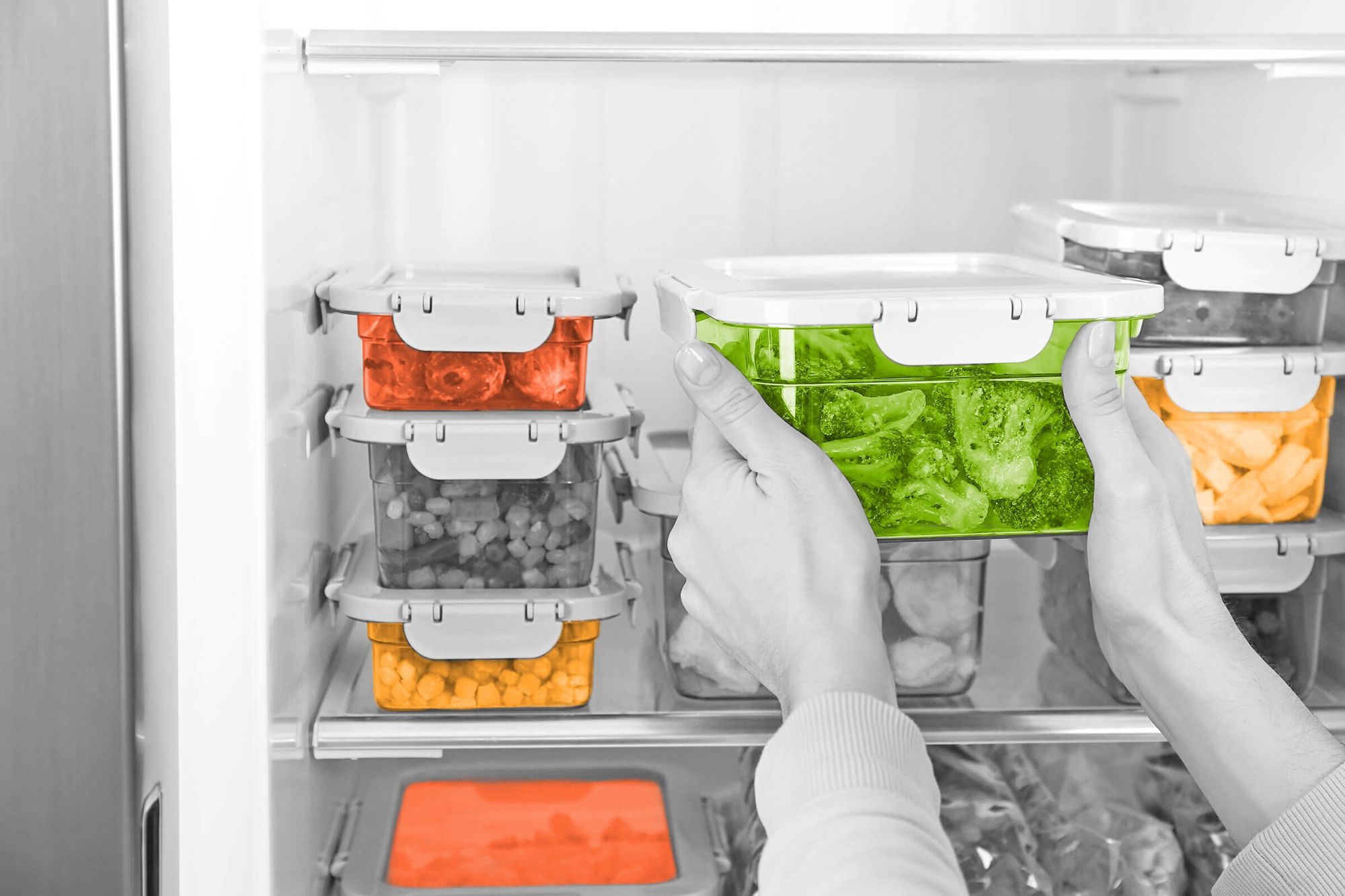

Once associated with soggy, nutrient-deficient meals doled out by overworked parents and unmotivated students, frozen foods have developed into a $250 billion global industry that offers a wide range of choices to satisfy both the health-conscious and those with a sweet tooth. Warm up a tray of your favorite Hungry Man or Lean Cuisine dish and dig in for these six fun facts about the wonders of frozen dining.
Clarence Birdseye Introduced the First Commercial Frozen Foods

The frozen food business as we know it can be traced to the efforts of naturalist, businessman, and inventor Clarence Birdseye, who enjoyed his fill of thawed-out fish during an early 20th-century summer spent in eastern Canada. Recognizing that quick freezing was the key to preserving a food's freshness and texture, Birdseye patented two methods for doing so by the late 1920s. Aided by the sale of his General Foods Company to Postum Cereal, which offered superior infrastructure for distribution and marketing, the first line of Birdseye "frosted" fish, meats, fruits, and vegetables began appearing in stores in 1930.
Richard Nixon Once Headed a Frozen Orange Juice Company

In the late 1930s, while president of a company called Citra-Frost, Richard Nixon sensed an opportunity to bring a frozen orange juice product to market. Nixon was even willing to roll up his sleeves to do the pulpy work, which meant late nights of cutting and squeezing oranges after finishing a day's work at his law firm. Alas, the means for turning juice into a frozen concentrate would not become a reality until the next decade, and after the company's inventory blew apart a refrigerated boxcar, a nearly bankrupt Nixon decided he was best off sticking with the law.
Swanson Popularized the TV Dinner

The first fully realized, ready-to-be-thawed meal was developed by inventor William Maxson, who began supplying the U.S. military and airlines with his "Strato-Plates" in the mid-1940s. His death opened the door for FridgiDinners and Frozen Dinners, Inc. to emerge as the product's first commercial leaders, before Swanson cornered the market with the introduction of its famous "TV dinner" in 1954. However, the creator of this particular emblem of postwar Americana remains up for debate; for decades, Swanson salesman Gerry Thomas claimed the TV dinner was his idea, although other employees have since stepped forward to credit the company's founders, Gilbert and Clarke Swanson.
Americans Have Enjoyed Ice Cream Since Colonial Times

Any detailed discussion of frozen food would be incomplete without mention of the milk, cream, and sugar-based delight known as ice cream. Allegedly brought from the Far East by Marco Polo, the early iterations of ice cream's close cousin, gelato, appeared in Europe in the 17th century. From there, the frozen treat followed settlers to the New World, with Founding Fathers George Washington and Thomas Jefferson known to indulge themselves as often as possible. (In fact, Jefferson was the first known American to write down a recipe for ice cream.) Modern concoctions like the ice cream sundae and milkshake appeared by the late 19th century, and nowadays, we all eat like Founding Fathers by gobbling down an estimated 20 pounds of ice cream per year.
Totino’s Became the First Frozen Pizza Giant

Recognizing the home market potential for the pizza restaurants that were surging in popularity, Philadelphian Joseph Bucci filed a patent for his "Method for Making Frozen Pizza" in 1950. Alas, other entrepreneurs were already turning a profit with frozen pizza sales by the time the patent was approved in 1954, relegating Bucci to a footnote in the food’s history. Ultimately, it was Rose and Jim Totino who emerged as the big dogs of the business, after shuttering their restaurant to focus on a frozen pizza line in the early 1960s. While Totino’s soon faced healthy competition from Tombstone and Red Baron, and was eventually surpassed by the rising crust innovation of DiGiorno, the unveiling of Totino’s Pizza Rolls in 1993 ensured that the brand name would endure among snackers everywhere.
There’s a Frozen Food Hall of Fame

While it lacks the prestige of, say, the National Baseball Hall of Fame, the Frozen Food Hall of Fame at least bestows a measure of immortality on the trailblazers who shaped this well-preserved corner of the culinary market. The Frozen Food Hall of Fame was established in 1990 by the Distinguished Order of Zerocrats, a very real and presumably tongue-in-cheek-named organization of industry insiders who gather every year to celebrate the latest round of inductees. Clarence Birdseye was among the headliners of the hall's first class, while Rose Totino became the first woman to be enshrined in 1993.
